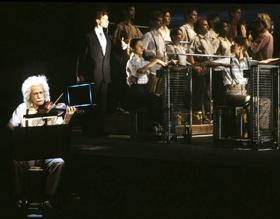Merry May of Mahler
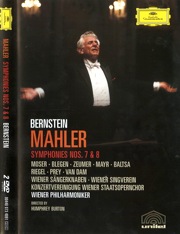
One of Leonard Bernstein's many accomplishments was to bring Gustav Mahler to the attention of American audiences in the 1960s, five decades after the death of his predecessor at the New York Philharmonic. And yet, despite Bernstein's performances and recordings of those challenging masterpieces, Mahler's popularity had its ups and downs.
Even middle-aged music lovers remember the time when Mahler symphonies appeared on concert schedules only sporadically, and when halfway through performances numerous audience members slithered or marched out of the hall.
Oh my, how times have changed, all for the better! But even in this new golden age of Mahler, the San Francisco Symphony's current blitz is special. In addition to the rich Keeping Score representation of Mahler on radio and television, the orchestra is about to embark on a Mahler festival here, and then sail on a Mahler-heavy tour to Over There.
In an unusual move, Michael Tilson Thomas and the orchestra are squeezing several performances each of three Mahler symphonies into a 10-day period in Davies Symphony Hall — Symphony No. 9 on May 5 and 6 (to be broadcast on KDFC-FM on May 17); Symphony No. 2 ("Resurrection") on May 7 and 8; and Symphony No. 6, May 12-14.
Then it's off with MTT/SFS to Europe, concertizing at several venues most closely associated with Mahler, in Austria and the Czech Republic. In fact, the San Franciscans will play four of the 60 concerts scheduled in the Vienna Konzerthaus at these extraordinary Mahler anniversary celebrations — he was born in 1860, and died a century ago, on May 18.
The San Franciscans are due in the Konzerthaus May 21-25, performing all three symphonies we'll hear in Davies Hall — plus a Cowell/Berg/Beethoven program.
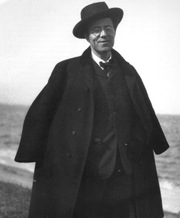
Mahler, born in Kalište — an old Czech town, partway between Prague and Vienna, with a population of 330 — attended the Vienna Conservatory as a student, and became director of the Vienna Court Opera at the height of his career there.
Following geography and history, before Vienna, MTT/SFS will give two concerts in Prague's Smetana Hall: Cowell/Berg/Beethoven on May 19, and Mahler’s Symphony No. 2 on May 20. After Vienna, it's on to Brussels' Palais des Beaux-Arts for a concert May 26, with the Mahler Symphony No. 6; then to Luxembourg's Philharmonie the next day, with the Mahler Symphony No. 9.
Thence to Essen, Germany, on May 29; and the Mahler Symphony No. 6; Cowell/Mendelssohn/Beethoven the next day in Paris' Salle Pleyel and the Mahler Symphony No. 2 on May 31. The long, ambitious tour ends in Madrid, Barcelona, and Lisbon, June 4-6, with the three featured Mahler symphonies.
What does it take to prepare for this jet-setting, Mahler-intensive month? In addition to all the previous Mahler rehearsals, performances, and recordings, MTT/SFS will spend at least 10 hours in rehearsals in early May, with time set aside in each European venue as needed.
As the result of years of work on this project, the orchestra has finished recording the complete cycle of Mahler works, including the Adagio from the unfinished Symphony No. 10, plus works for voice, chorus, and orchestra. The cycle has won seven Grammy Awards, including three for Best Classical Album. Besides a 17-CD box set of all the recordings, a 22-album vinyl box-set is also available, priced at $750. The CD set (a hybrid SACD, actually) is available onAmazon for $175.
SFS musicians, about to embark on the fourth Mahler festival under MTT, feel anything but blasé about the journey over familiar ground. Says Carey Bell, principal clarinet:
Mahler does better than anybody, when he’s combining these humble qualities of little forest animals or little village bands, with the infinite. With the infinite terror and beauty of what it means to understand the infinite, or at least to have a grasp of the infinite, and combining these in this wonderful rustic way that then opens a door to something much more cosmic...Mark Inouye, principal trumpet, remarks:
Mahler, like most great composers, combines so many elements of human emotion. But it’s more than that — he combines everything, whether it's happiness or sadness or anxiety or hope. His music sometimes has a sacred quality to it; sometimes it's grotesque; he seems to be able to incorporate everything in a musical manner that is just so riveting and expressive and soulful in a way that when you hear it, especially for the first time, oh man, what an impression, and what a memory!
All-Tchaikovsky Blitz to Cal Performances
One of the highlights of the varied and attractive offerings that Director Matías Tarnopolsky has put together for Cal Performances’ 2011-2012 season is a three-day concert series, Oct. 14-16, by the Mariinsky (Kirov) Orchestra, conducted by Valery Gergiev, performing Tchaikovsky's six symphonies.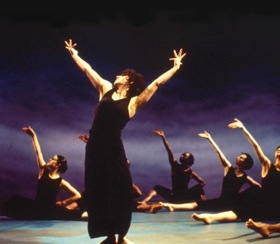
(There is no time left for the Manfred or for the abandoned Symphony No. 7, whose first movement the composer used in his posthumously published Piano Concerto No. 3.)
Oct. 26–29 will bring the U.S. premiere of the Desdemona Project, a collaboration between novelist Toni Morrison, singer/songwriter Rokia Traoré, and director Peter Sellars. The work deals with Shakespeare’s Desdemona and "her African nurse, Barbary." It is a co-commission by Cal Performances.
John Malkovich appears in The Infernal Comedy: Confessions of a Serial Killer, a multidisciplinary performance that combines theater, opera, and the music of Beethoven, Haydn, and Mozart. It is the story of an Austrian named Jack Unterweger, a convicted murderer who becomes a literary celebrity, only to murder many times again after being paroled. The performance features the Baroque ensemble Musica Angelica, conducted by Martin Haselböck (Oct. 21).
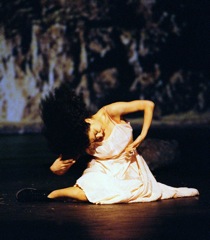
Photo by Bettina Stoss
The season opens Sept. 16, with a three-performance run of Purcell's 1689 Dido and Aeneas by old Cal Performances friends Mark Morris and the Philharmonia Baroque. The choreographer, who made his debut on the podium five years ago, conducts the orchestra. The title role will be sung by Stephanie Blythe.
Once again, a free open house will be held on campus, on Sept. 25, with performances by the American Bach Soloists, AXIS Dance, Wayne Wallace Quintet, San Francisco Opera Adler Fellows, CK Ladzepko, the African Music and Dance ensemble, Berkeley Symphony Orchestra, and others.
A fascinating mix of classical and jazz pianists is scheduled: Herbie Hancock on Sept. 21, Yefim Bronfman on Oct. 11, Keith Jarrett on Oct. 29, Lang Lang on Nov. 2, Alfredo Rodríguez on Jan. 29, Kirill Gerstein on Feb. 12, András Schiff on Feb. 29, Murray Perahia on March 11, Richard Goode on March 25, Jonathan Biss on April 1, and Peter Serkin on May 8.
The late Pina Bausch's Tanztheater Wuppertal will give the West Coast premiere of Bausch’s Cuban music–inspired 1995 Danzón, choreographed to a musical montage of Mahler, Cilea, Giordano, Purcell, Saint-Saëns, Ben Webster, Billie Holiday, and pop composers (Dec. 2-3).
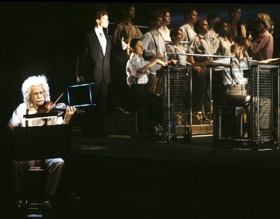
The Kronos Quartet performs works by Steve Reich on Oct. 9; Nicola Luisotti conducts the San Francisco Opera Orchestra in Beethoven's Symphonies No. 5 and No. 7 on Oct. 28; the "resident"-in-all-but-name Takács Quartet returns on Nov. 6, Dec. 4, and Feb. 19 (a complaint: putting two months between performances of the two Janáček string quartets — tsk, tsk!); the Gate Theatre of Dublin offers plays by Samuel Beckett, Nov. 17-20.
Charles Dutoit conducts the Royal Philharmonic, with Jean-Yves Thibaudet as the soloist in the Liszt Piano Concerto No. 1, on Jan. 28. Marin Alsop and her Baltimore Symphony perform the music of Copland, Tower, Higdon, and Prokofiev on March 30 and, the next night, join the UC Choral Ensemble to provide accompaniment to a screening of Carl Dreyer’s 1928 silent film The Passion of Joan of Arc, with Richard Einhorn’s score.
Among notable artists, all local favorites, coming to Berkeley: bass-baritone Eric Owens, accompanied by Craig Rutenberg, on Nov. 20; Nicholas McGegan conducting the Philharmonia Baroque in the Handel Messiah on Dec. 19; Susan Graham with Malcolm Martineau on Jan. 14; Wolfgang Holzmair and Russell Ryan on March 4; Zakir Hussain and Masters of Percussion on March 24; David Finckel and Wu Han, also on March 24; Ojai Festival Music Director Leif Ove Andsnes and the Norwegian Chamber Orchestra on June 12-14.
And, as we hear from a little bird, it looks like Philip Glass' Einstein on the Beach will be staged in the season after next ... unless the Mayan calendar's prediction turns out to be true.
Temirkanov on Warpath Against 'Tschaikowski'
Besides the Mariinsky (see story above), Yuri Temirkanov's St. Petersburg Philharmonic, and several less-traveled Moscow organizations, a growing number of "famous orchestras" are being exported from Russia by promoters big and small.
It took Temirkanov to blow the whistle.
Columbia Artist Management (that's a big one) is promoting the "Tschaikowski" St. Petersburg State Orchestra as "an ensemble with unlimited musical possibilities." As reported by Daniel Wakin in The New York Times, Temirkanov says "this Tchaikovsky orchestra doesn’t exist ... nobody knows who plays there. Maybe they got some sort of band. Maybe students. But they put the word 'state.' But there is no such orchestra, neither private nor state."
The promotion appears on the Columbia Artists Management site in advance of a major American tour planned for next year.
'Lepage aux folles' at the Met
Robert Lepage has his fans, but a certain Financial Times critic isn't one of them. In Martin Bernheimer's review of the premiere of Lepage's production of Wagner's Die Walküre at the Metropolitan Opera, he describes the set thus:
Last fall, Robert Lepage inaugurated his would-be revolutionary Ring at the Met with a (per)version of Das Rheingold that courted theatrical disaster. On Friday he added a Walküre that turned out to be just a mighty irk. Call that progress. Or call it Lepage aux folles.By comparison, the entire upcoming San Francisco Opera Ring production will cost about half the money spent on Lepage's set. Chances are, in the hands of Francesca Zambello, it will also be less overwhelming and less Wagner-defying.The central 90,000-pound toy remains the same [in Die Walküre]. Spending what may be $40 million, manipulating 24 twisting-bobbing-rotating-rising-falling aluminum/fiberglass planks, and reinforcing the stage with steel girders, the director has masterminded a cumbersome apparatus to compromise mythological logic. The machine also creates obstacle courses for the singers.
Although Lepage musters some compelling images, they impress on his terms, not Wagner's. The same log-cabin quasi-structure represents the hut in Act One and the mountainous crest in Act Two. Irrelevant shadow-puppets illustrate Siegmund's narrative. A gigantic orb — an eye? — pops up during Wotan's monologue. The Valkyries ride silly see-saws before sliding down tilted planks. At the climactic finale, the real Brünnhilde goes away, replaced by a body-double hanging upside-down on a panel of kitsch flames. Call it a sight gag.
True, it's the "American Ring" and it has its peculiarities and "modernities," but her Die Walküre especially was about the opera itself, not "twisting-bobbing-rotating-rising-falling aluminum/fiberglass planks."
One more Ring note: Kent Nagano will conduct the cycle in Munich's Nationaltheater, beginning next February 2012, staged by Andreas Kriegenburg. That will provide a grand exit to the music director of the Bavarian State Opera, whose contract expires at the end of next year. General Manager Nikolaus Bachler has yet to announce Nagano's successor.
This Way the Mermaid Swims Again
San Francisco Ballet’s American premiere of John Neumeier's production of The Little Mermaid caused quite a stir, so an "instant revival" is coming next week.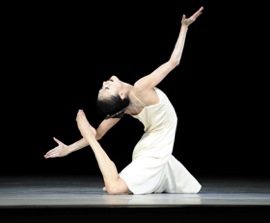
On an amazing Web site you can read up on the ballet, but of course the thing to do is to experience the piece for yourself. I am giving it another try, but I had a problem last year:
When San Francisco Opera Artistic Adviser Francesca Zambello staged Disney’s The Little Mermaid on Broadway in 2008, the New York Times called it "an unfocused spectacle, more parade than narrative ... achieves the dubious miracle of translating an animated cartoon into something that feels like less than two dimensions."At San Francisco Ballet's premiere of The Little Mermaid, I had a similar sense of something not being right. In both cases, the problem was not doing justice to the original.
The genius of Hans Christian Andersen is in his simplicity, brevity and restrained sentimentality. His stories are instantly memorable and they speak to the heart — not quite so with the ballet. It had a big cast, outstanding dancing, impressive sets and costumes, but not Andersen's straightforward storytelling.
Of the Danish author's 168 tales, some, such as The Princess and the Pea, run a super-economical 370 words. They’re stories that can be told in a couple of minutes, not requiring two acts and an intermission totaling 2½ hours.
Andersen's 1837 Mermaid is unusually long, and it has more twists and turns and description of places than most of his tales, but its basic story is simple. A mermaid falls in love with a prince and saves his life, but is not recognized by him when she appears as a human, having sacrificed her tail, mermaid-longevity and voice in exchange for feet.
If she cannot marry him, the mermaid may return to her former life only if she kills the prince. She refuses, sacrificing herself once again — only to be lifted into heavenward, among "daughters of the air."
Consider that poignant but simple story danced and danced around — with the addition of a wheelchair, a strange isolation chamber for the Mermaid, and other at times confusing subplots and episodes. What a great 25-minute straightforward piece this evening-long Regietheater could have been!
Quixotic Dance Technologies' Google Woman
Dancer/choreographer Paris Wages’ company, called Quixotic Dance Technologies, is bringing its production of Google Woman: Images of Female to Z Space@Theater Artaud during Mother’s Day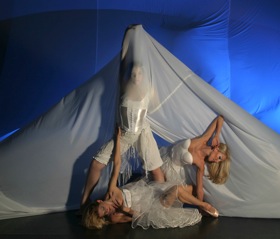 weekend, May 6-8. (Note: We are just reporting the news, not making it up.)
weekend, May 6-8. (Note: We are just reporting the news, not making it up.) Featuring San Francisco Circus Center aerialist Jennifer Charles, dancers, graphics, and the music of Vivaldi played by Edoardo Bellotti on the Eastman Italian Baroque Organ, plus William Byrd's Ah Silly Soul and In Nomine a 5, Quixotic is missing only the Mermaid's wheelchair and isolation chamber.
But let the company speak for itself:
... a multimedia foundation combining digital images projected onto the canvas of classical dance. Advanced lighting designs and aerial arts are also intertwined with the elements of dance and digital graphics. The culminating effect is pushing the expectations of audiences and presenting a new vision of dance theatre for the 21st century.
Alexander SQ to Close Music at Kohl Mansion Season
The Alexander String Quartet offers a rich program on May 1 at the closing concert of Music at Kohl Mansion's 28th Chamber Season. The Quartet — both the ensemble in residence of San Francisco Performances and directors of the Morrison Chamber Music Center at San Francisco State University's College of Creative Arts — will perform the Haydn String Quartet in C Major, Op. 54, No. 2; Shostakovich's String Quartet No. 13 in B-flat Minor; and Dvořák’s String Quartet No. 13 in G Major, Op. 106. At 6 p.m. Kai Christiansen will give a preview.On May 7 at 3 p.m., Music at Kohl Mansion gives a free concert at the San Mateo Public Library, presenting the Venezuelan jazz and world music quartet VNote Ensemble.
John Adams, Always Ahead of the Curve, and That's No Jest
Few composers meet deadlines as promptly and reliably as John Adams does. Both at Davies Hall and in the War Memorial Opera House, other composers may drive those companies up the wall with last-minute (or after) submissions of new works, but Adams is "on time." There are some decades-old commissions still awaiting delivery (not eagerly or with hope), yet such major Adams works as Doctor Atomic and Harmonielehre arrived as advertised.In fact, Adams has just submitted to the San Francisco Symphony the score of its commissioned work — to be performed on March 15. Read the story in the South Florida Classical Review.

